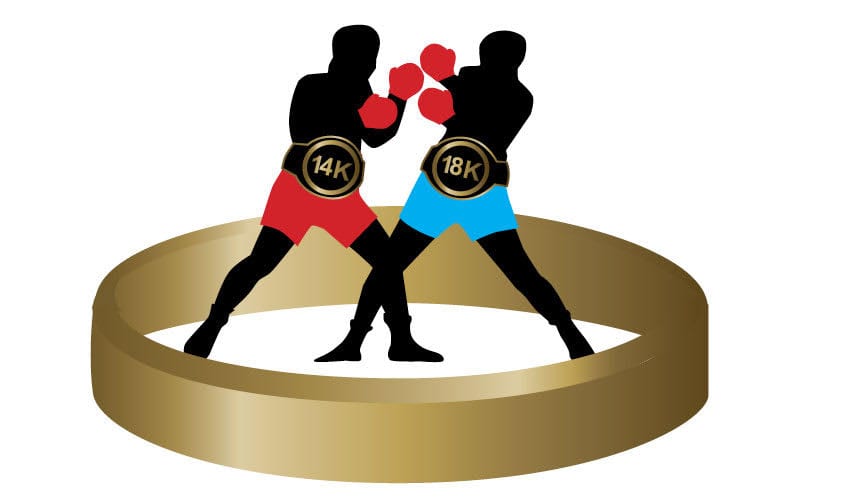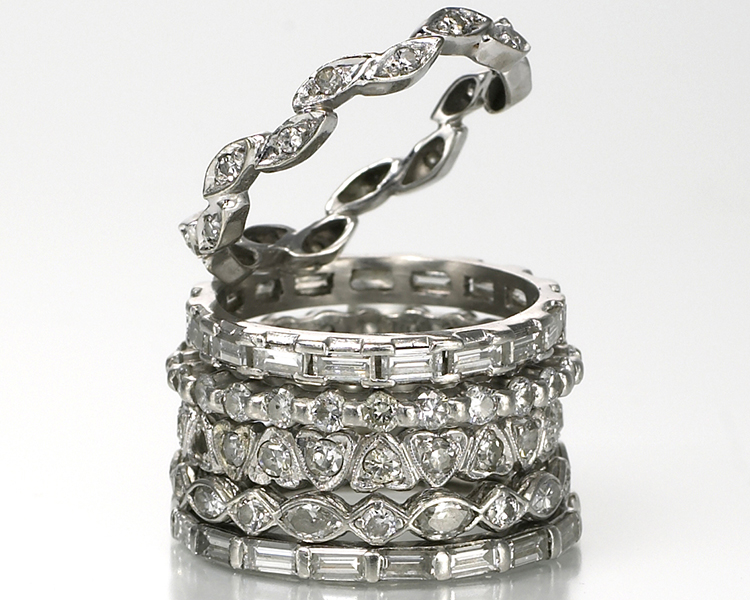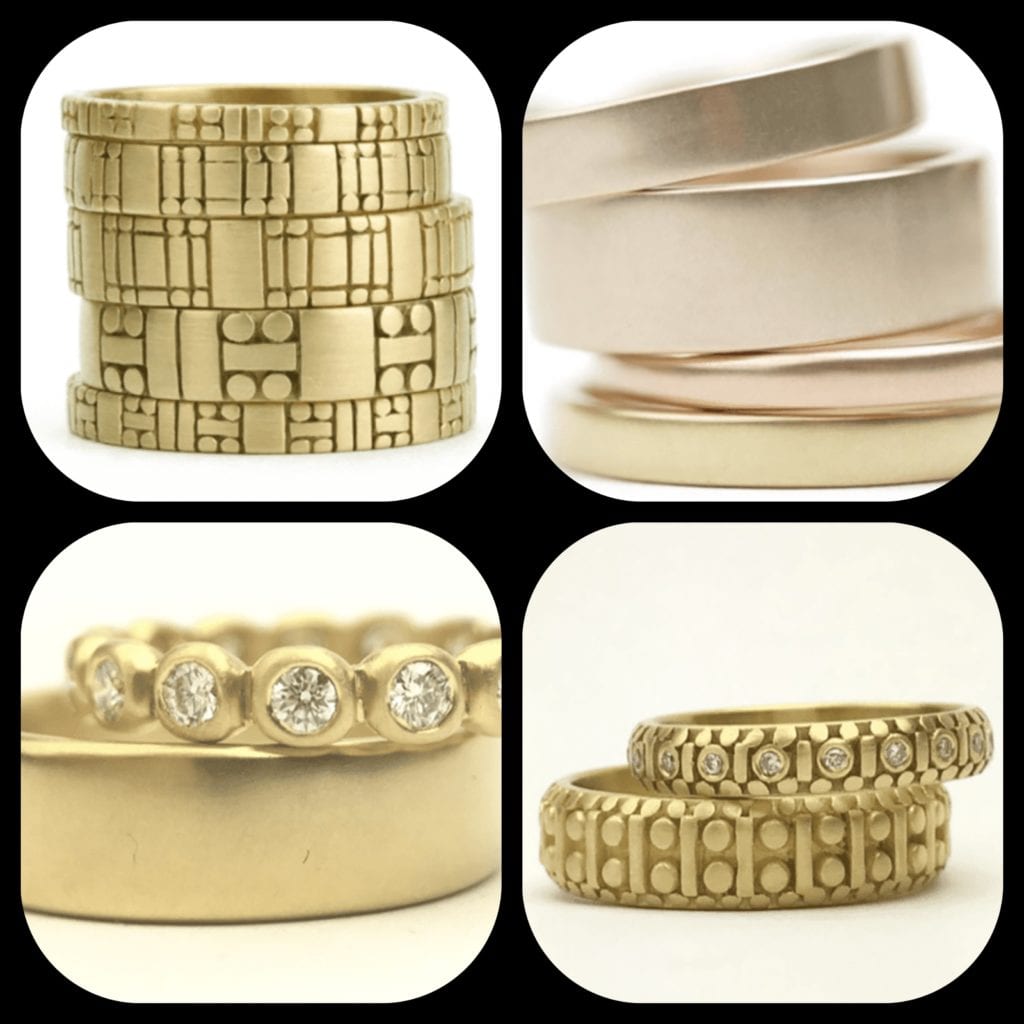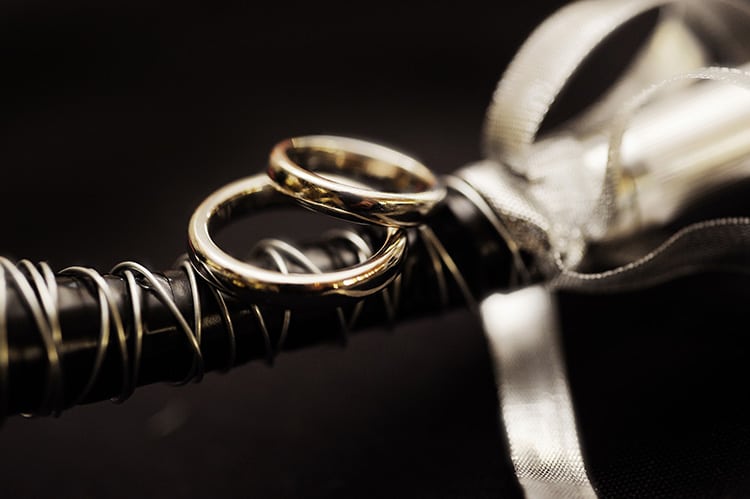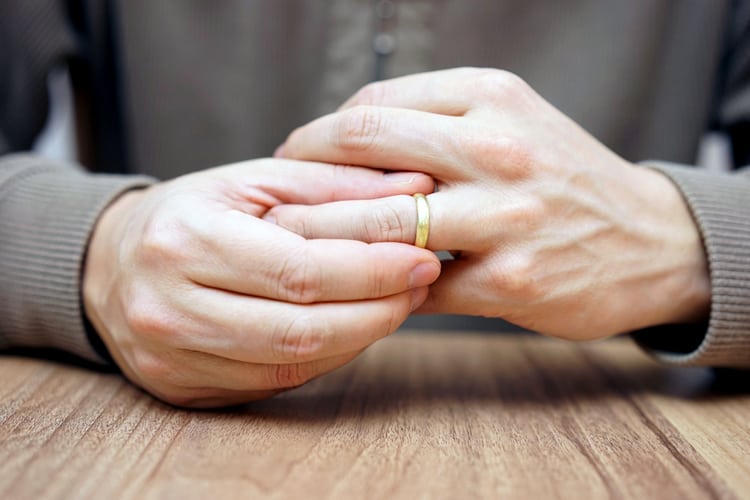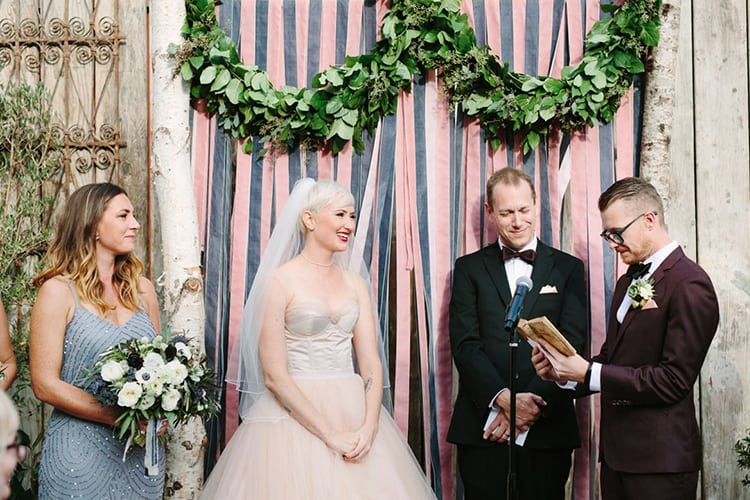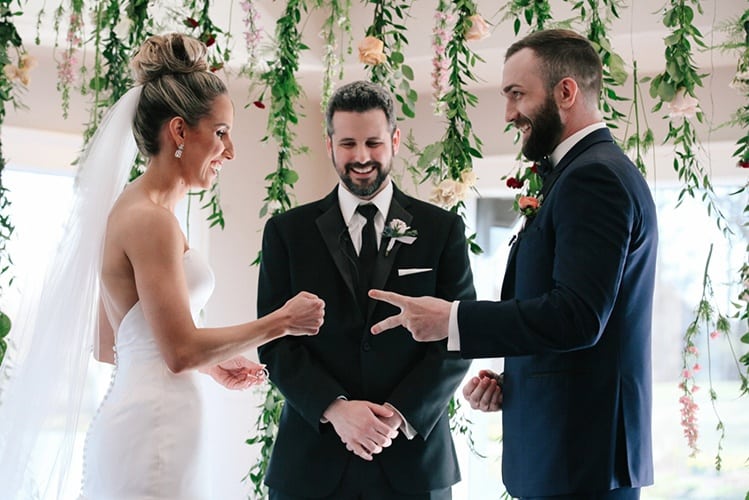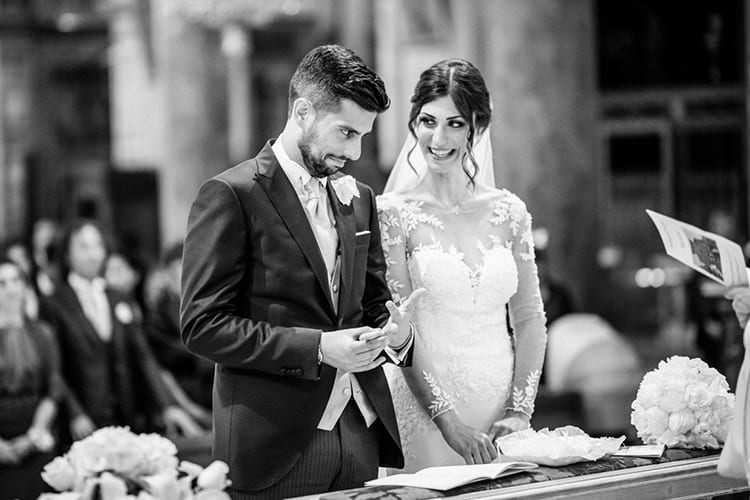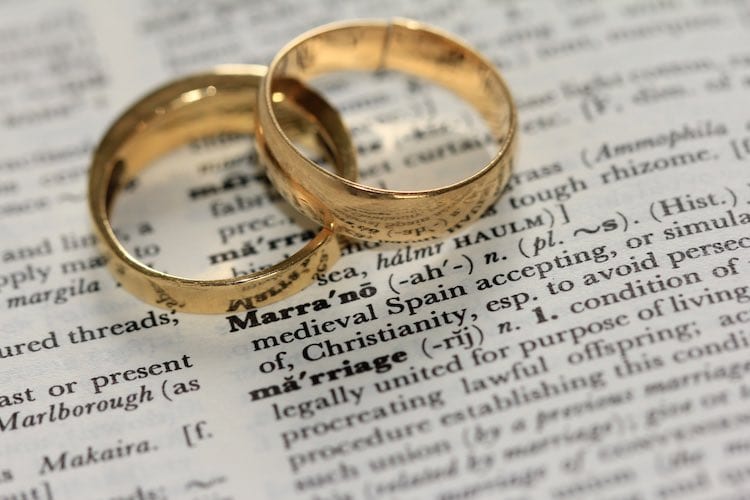
You found the perfect engagement ring — and proposed in just the right way — and now your partner can’t stop staring at it the way she used to look at you. It’s a little unsettling but you understand; you’re just happy the ring-buying went so well. You’ve also accompanied her to choose a wedding band that complements her engagement style and you feel like you’ve got everything under control. But wait: Aren’t you forgetting something — where is your wedding band?
If you’re like a lot of traditional men who have never worn a piece of jewelry except for a watch, you most likely want a classic style with a touch of texture and something that’s comfortable to wear.
The price? With all of the materials available, the weights in gold and platinum type of finishes, and whether or not to have a stone or stones, rings will vary in price. If you want to go for a lower-price ring, then consider steel, tungsten and titanium. Gold, palladium and platinum exist at the higher end. Below is everything you need to know about men’s wedding rings … and probably some things you didn’t need to know.
Men’s Wedding Bands: Brief History
Back in the last century, men’s wedding bands (unless you were of royal heritage) were typically made of 14K or 18K gold (or platinum) with a 3 to 6 mm rounded edge. That’s what guys got. But now, if you have even a glimmer of fashion sense, you know that there are myriad rings styles, designs, metals, and textures to choose from.
On Blue Nile’s website, for example, you can select various metals and styles.
Metals
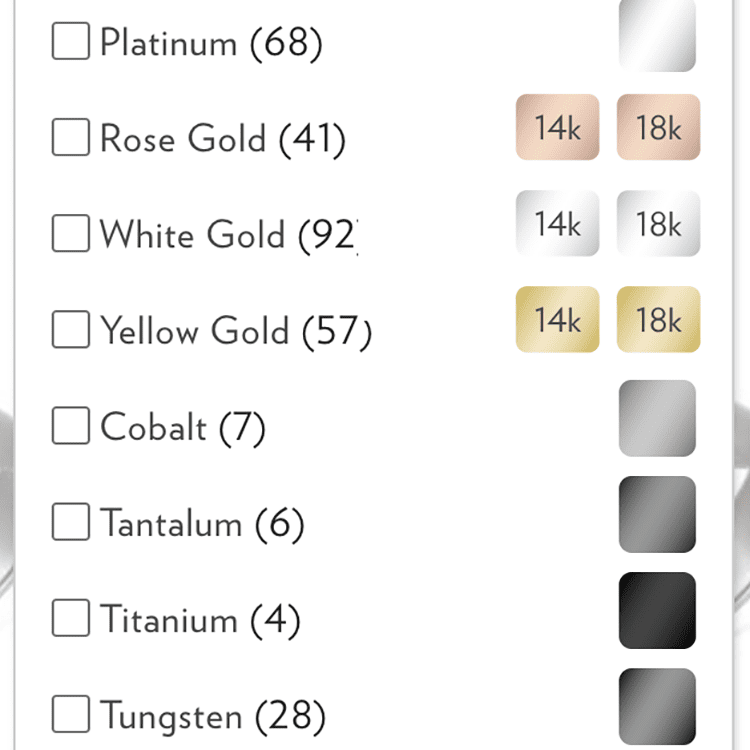
Before we get into the styles, let’s go over some of the basics. If you are shopping at a brick-and-mortar retailer, the sales staff can be extremely helpful, but if you are buying online and you don’t want to ask too many questions, we’re here to help. I culled a list from my male friends; below are some of the questions they most wanted answered. And yes, a band is the same thing as a ring.
How Do I Measure My Ring Size?
This is not a do-it-yourself sort of thing. It’s best to have a jeweler do it with his or her ring sizer that displays bands in sizes that go from 2 to 12. Remember that you don’t have to buy your ring on day one; you can stop in to browse different styles and try them on. You could also buy a ring-sizing kit for $12.99 from Amazon (see photo below). But the jeweler knows best.
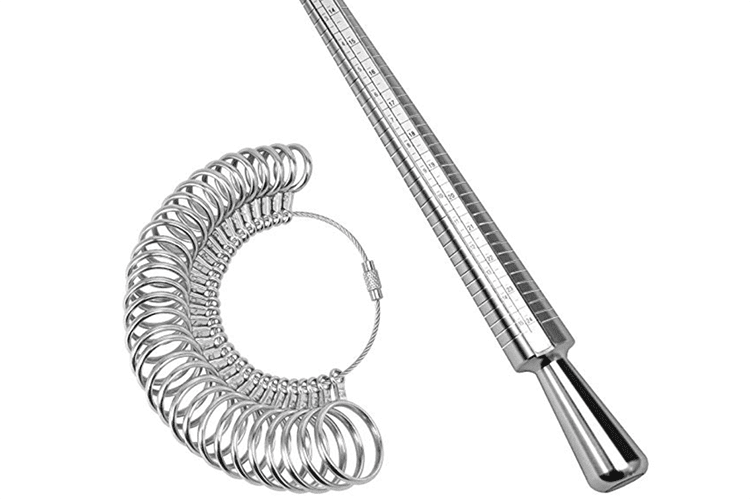
If the ring is really wide — 6mm or more (or a heavier ring), you should go ½, ¾ or one whole size up. For example, if you wear a size 9 in a thinner band, you might want to try a size 10 to see if it is more comfortable in a wider style.
You know the ring fits when you can put it over your finger and no matter how much you wiggle your finger or try and fling the ring off your hand, it won’t move over your knuckle. Not very scientific, I know, but it works. As long as it doesn’t go over your knuckle, you can wear the ring a tad looser if you’re not used to wearing jewelry. This way you won’t be playing with it or moving it up and down when you’re supposed to be answering emails.
You can also go lighter weight with the ring you choose. Some men’s wedding bands are super heavy, rendering them uncomfortable and almost claustrophobic to wear. Also, consider the metal (which we’ll discuss later). For example, the same ring cast in platinum will be much heavier than those cast in 14K or 18K gold.
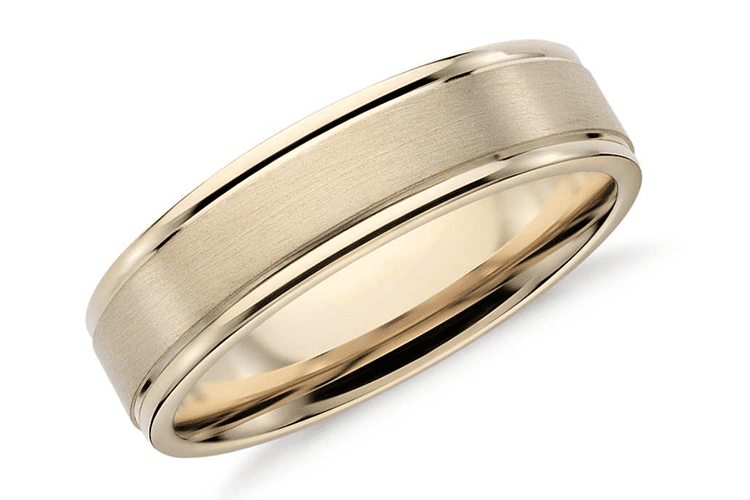
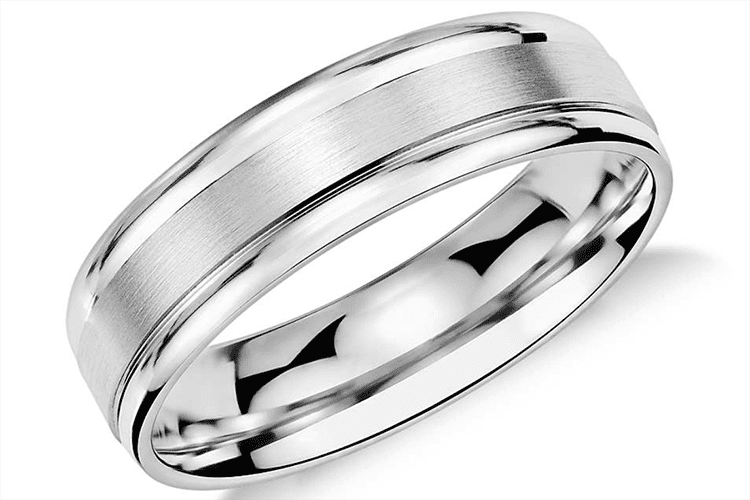
The other aspect to remember when it comes to size is that your fingers shrink in winter and swell in summer (the humid months), so if you go to a jeweler to size you, they will consider the season.
Wedding Band Shapes
While classic wedding bands are round — representing a continuous circle around the finger that cannot be broken for consistent and everlasting love — there are different edges and shapes of the bands that you might feel more comfortable wearing.
- Domed: The most classic of all with its rounded edges
- Flat: Contemporary and minimal in feeling, this shape rests flat against the finger
- Beveled: This style has edges that are cut on an angle so that the ring gives a slightly rounded appearance. It is similar to domed but is lower profile and more modern in style
- Knife-Edged: This band has two edges that slope and meet to form a point in the middle, giving the ring a more angular appearance
- Coin: Actually looks like the sides of a coin, with small cuts on the border of the outside of the band
- Step: This is formed by multiple ridges to add dimension to the outer rim of a plain flat band
Domed
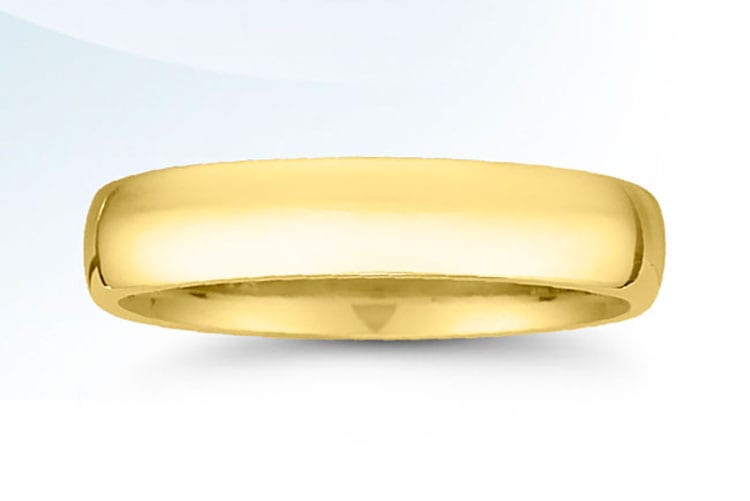
Flat
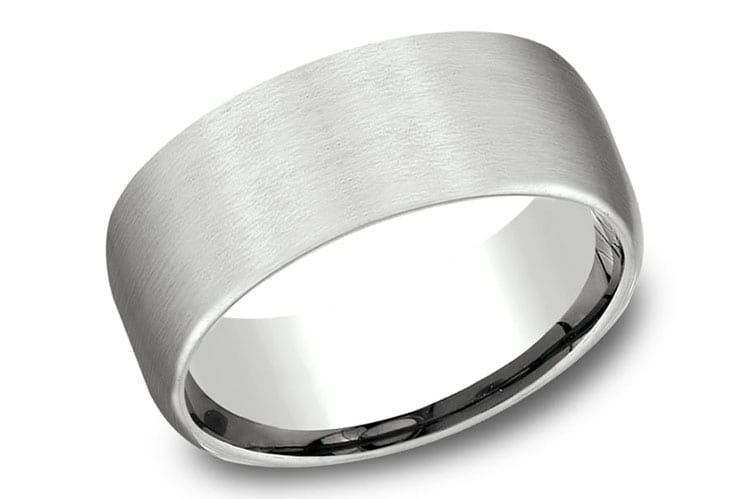
Beveled
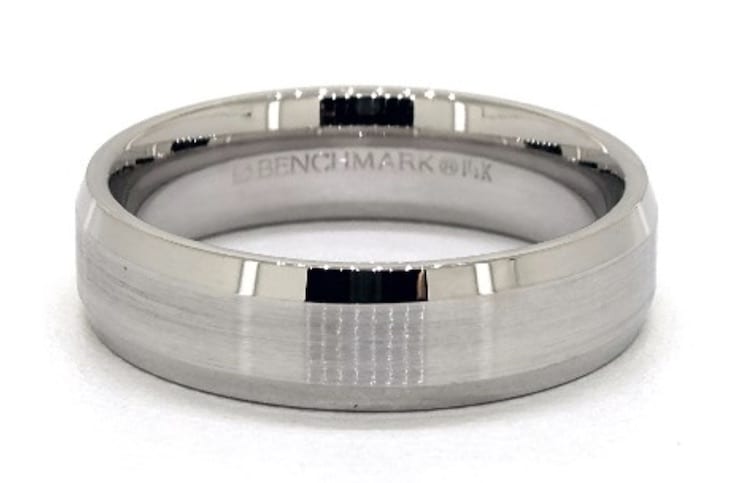
Knife-Edged
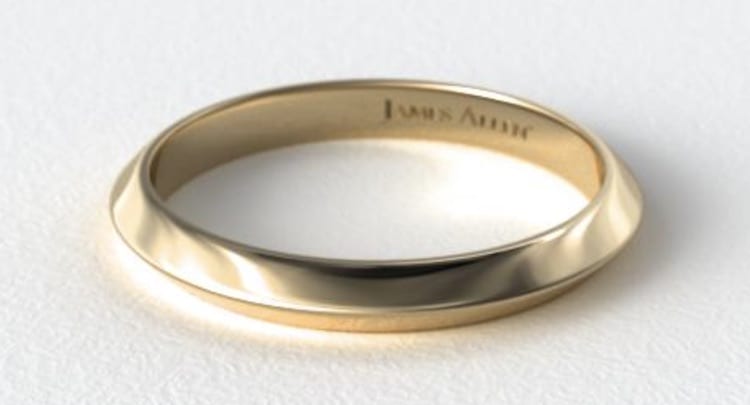
Coin
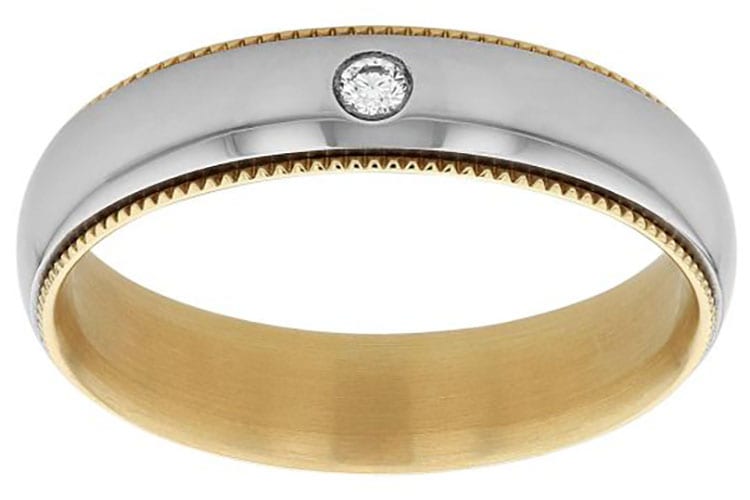
Step
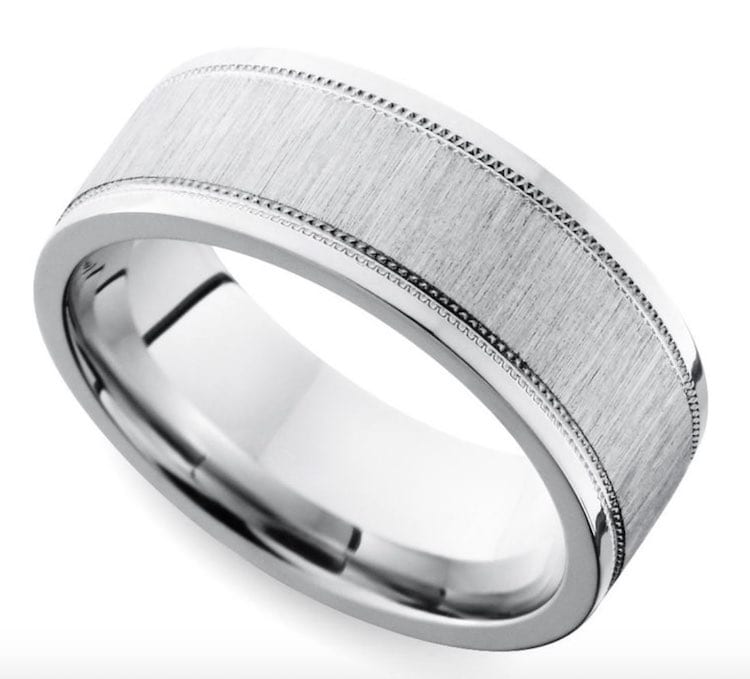
Wedding Band Metals
Men’s wedding bands offer a wide range of materials. At times it could feel intimidating. We advise you to think about the choice of metals that best suits your lifestyle, career, and comfort level; any allergies you might have; your budget; the maintenance of the ring; and what looks best on your complexion. Let’s start with the classic and timeless: gold.
Gold Wedding Bands
Around for millennia, gold is an enduring metal and has long been the most popular choice for men’s wedding bands. Gold is available in four different colors: yellow, green, white, and rose gold. These are all mixed with different alloys for both color and strength — pure gold is extremely soft, and therefore, the higher the karat, the softer the gold will be. For example, 24K is pure gold but is prone to bending out of shape easily.
We recommend sticking with 18K and 14K golds for wedding bands. Both of these karats come in all the colorways mentioned above. 18K is still a bit softer than 14K but is richer in the yellow and green gold (green gold has a higher karat look but is close to yellow), and is still a suitable strength for wedding bands. It is also more expensive due to the higher purity of the metal.
When choosing the color gold — it’s advisable to go with the one that suits your complexion the best (our advice: try it on and see what you like). There are certain textures and techniques that combine colors into one ring, which is another thing to consider.
As far as white gold is concerned — there is always a slight yellow tint to it when it is cast — the process to achieve a pure white look is to rhodium plate it. This process creates a beautiful white finish, but beware, it’s one of the more high-maintenance golds since you will have to have this re-plated and polished at least once a year if you wear your ring every day.
Gold should be polished as often as possible as it does scratch easily, but if you don’t mind personality, character and wear, you can have it polished less often. Avoid too much wear and tear. If you notice this, bring it in for polishing, as you’ll want to keep it in good condition. All gold rings can be set with diamonds or gemstones if you want a bit of sparkle. Bling adds details and textural interest.
White Gold
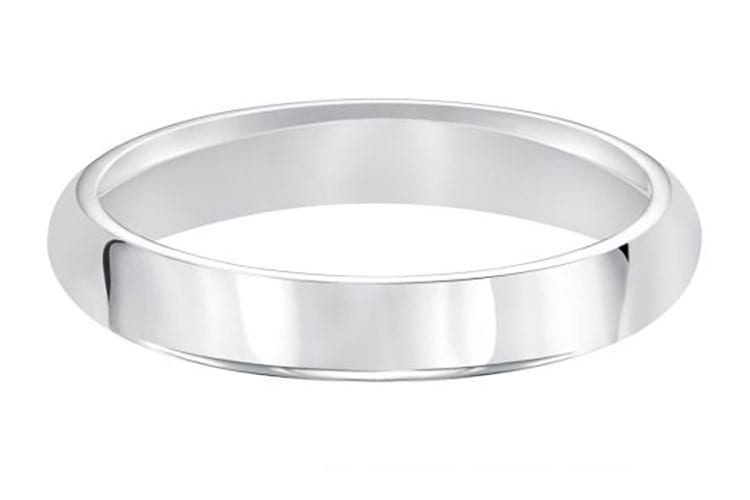
White and Rose Gold
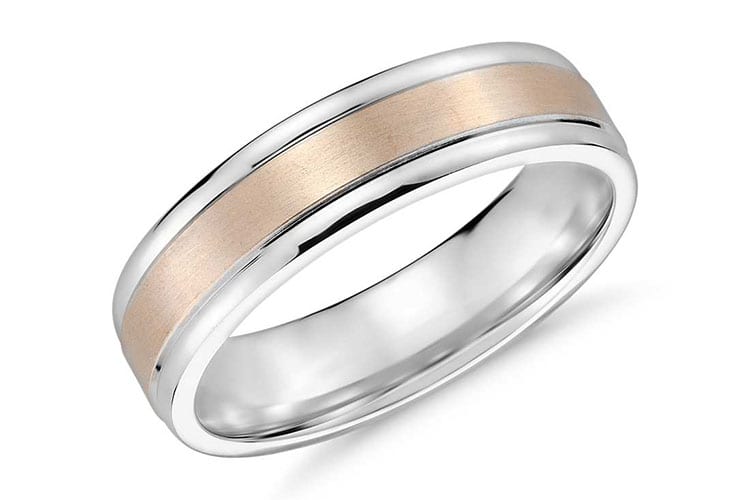
Yellow Gold
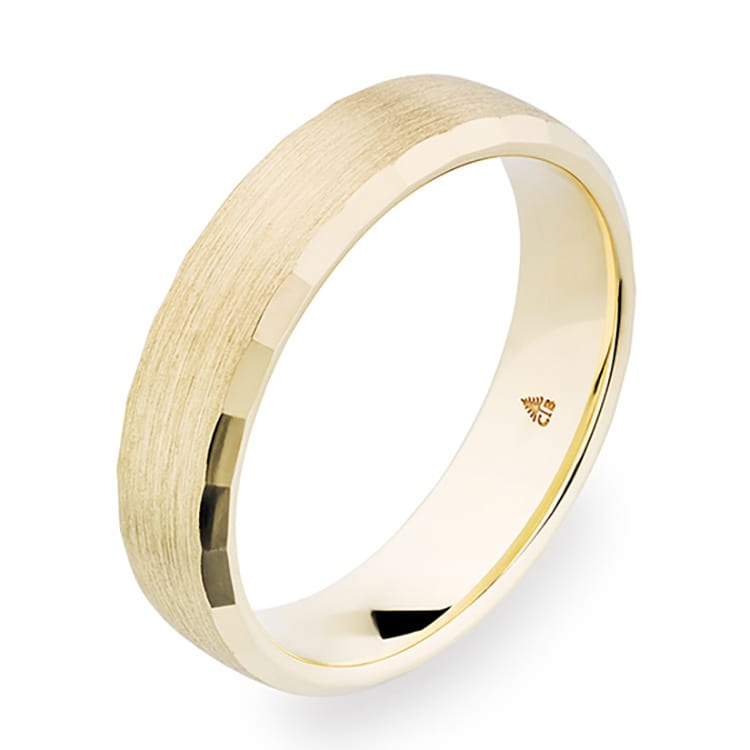
Now let’s look at the variety in white and other metal choices.
Platinum Wedding Bands
Platinum was officially discovered in the late-1700s and is the purest of metals. During WWII it was rationed for the war but became popular again and took off in the 1990s as the most desirable metal for both men’s and women’s wedding bands. Its natural steely white color, reputation as the strongest precious metal, and ability to be worn every day with minimal signs of wear, make it the perfect ring for wedding bands and well worth the investment.
Platinum’s patina actually grows more beautiful with age. It retains its luster, is tarnish-free, and can be resized. If you want a brighter luster, you will polish your platinum ring once a year. However, if you prefer the natural luster, which becomes less shiny with age, then you can just clean your ring with a gentle dish soap and allow the natural character to show with age. Like gold, it can also be set with diamonds or gemstones and is a wonderful candidate for engraved and other textural details.
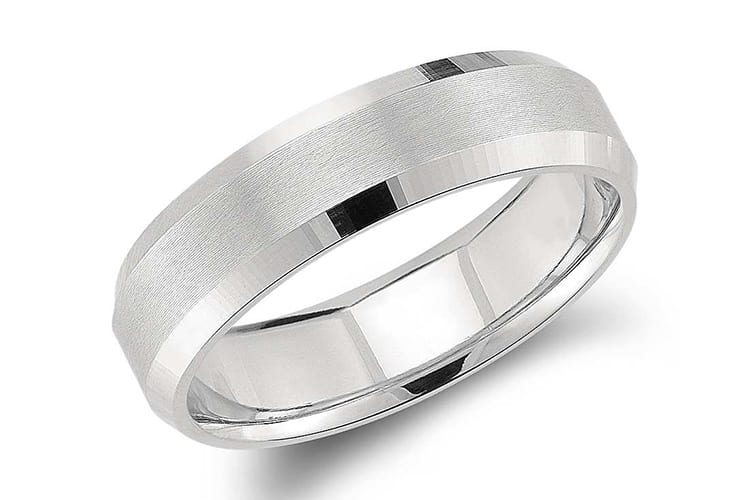
Palladium Wedding Bands
Palladium is also a natural white metal. Similar to the look and durability of platinum, it has become the most expensive of all of the metals — something platinum used to be. In addition to the vast difference in price, platinum can feel heavy in different styles, whereas palladium is lightweight and many men say it feels extremely comfortable.
It can be set with gemstones and also designed with textural interest. It does, however, show scratches, therefore it needs more polishing than platinum and it is more difficult to resize. One of the favorite attributes of palladium is that it is one of the fine hypoallergenic metals. Unlike white gold, it is not alloyed and does not need plating, which often contains nickel that can irritate the skin.
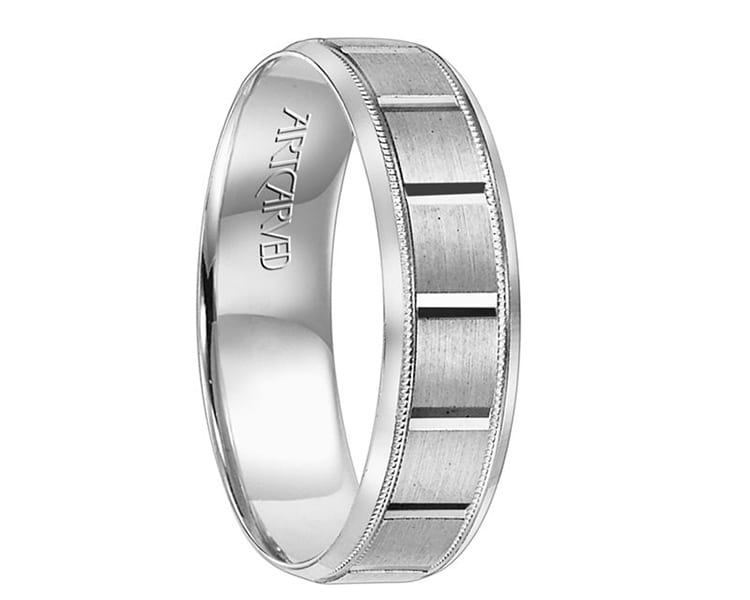
Sterling Silver Wedding Bands
Sterling silver is a favorite among men who prefer either an extremely toned down look or a rock-and-roll look at an affordable price. It’s one of the least expensive metals in wedding rings and like gold, it has been around for centuries. Textural interest is a big draw when it comes to sterling silver as the softness of the metal allows for all different types of design details. But this is also one of its drawbacks — it’s high maintenance, scratches easily, and could bend out of shape if it’s really light weight. It will also tarnish quicker than other metals so you will need to have it polished, cleaned, and checked regularly.
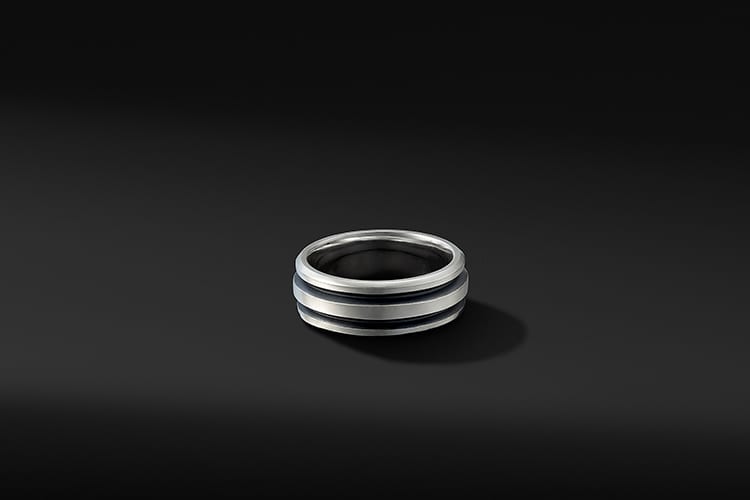
Stainless Steel Wedding Bands
Although used in watchbands for ages, stainless steel is a metal that is relatively new to wedding jewelry. It’s durable, accessibly priced, and makes for a steely white metal. However, it doesn’t wear as well as some of the other metals and therefore might need to be polished more often.
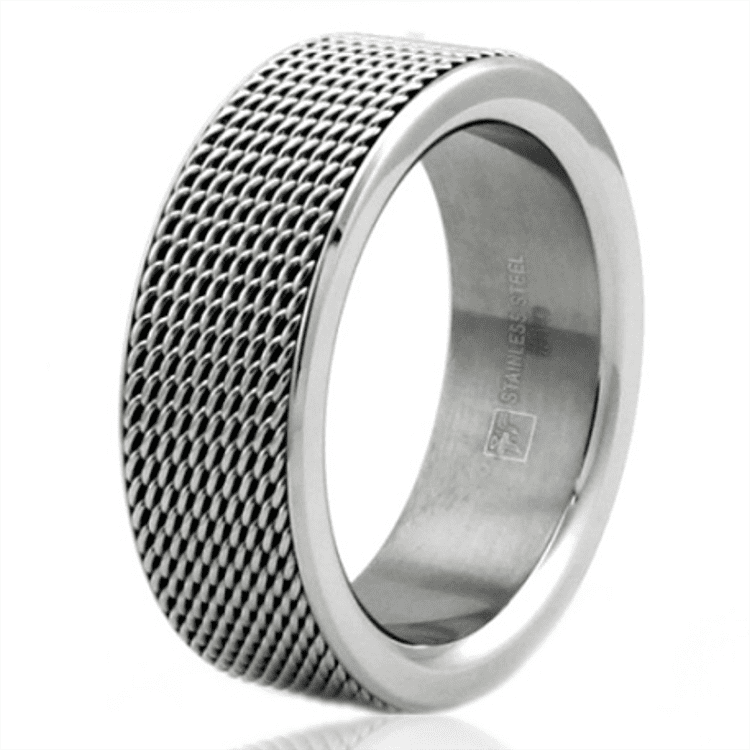
Cobalt Wedding Bands
This metal is also increasing in popularity in the category of men’s wedding bands. It’s a white metal, stronger than gold, and priced for guys on a budget. It scratches less than stainless steel so it might be a better option when choosing a more accessibly priced ring. Like stainless steel, it can’t be resized.
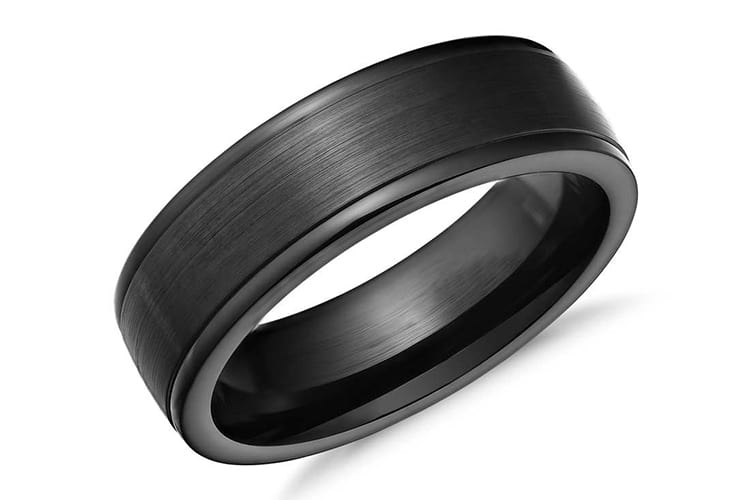
Titanium Wedding Bands
Titanium is strong while also being lightweight and comfortable, and is one of the metals that doesn’t tarnish. It’s as durable as steel yet much more wearable, lightweight, and comfortable. Polishing will erase any signs of wear. Wedding band designers like titanium because it can showcase different techniques and textures. It’s affordable and has an almost silver metallic sheen. Plus, it is available in black for grooms looking for an edgier or personalized look. The downside? It’s difficult, if not impossible, to size.
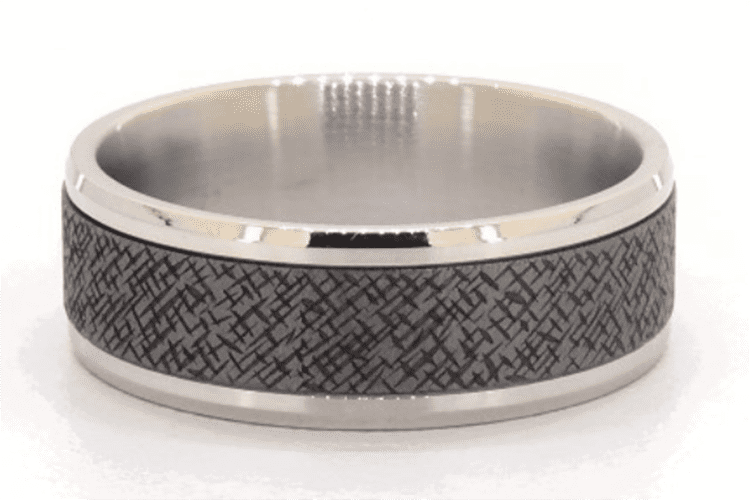
Tungsten Wedding Bands
Low maintenance and offered in an array of masculine colors such as grey and black, tungsten is a precious metal that never tarnishes and is resistant to scratches. Like titanium, tungsten is the perfect backdrop for different design details and creative techniques such as laser engravings and etchings to name just a few. It is also often inlaid with stones. But tungsten is a brittle metal that can chip or break and therefore cannot be resized. Note that many rings that are not made from ‘fine metals’ and are extremely strong cannot be resized. The two strongest metals for men’s wedding bands are platinum and tungsten.
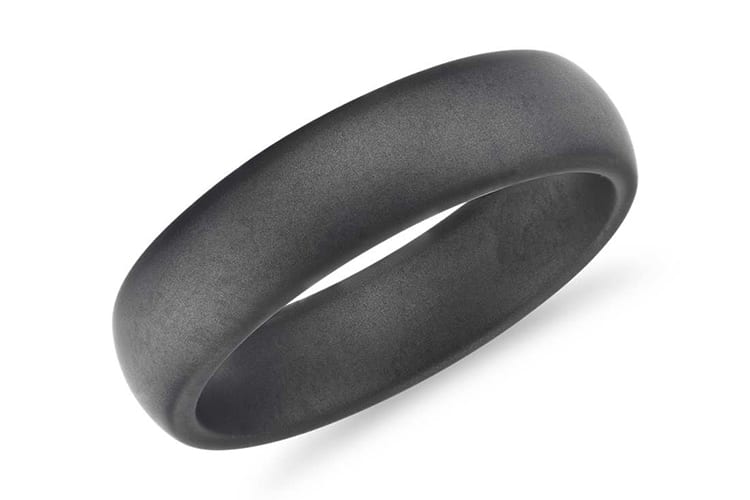
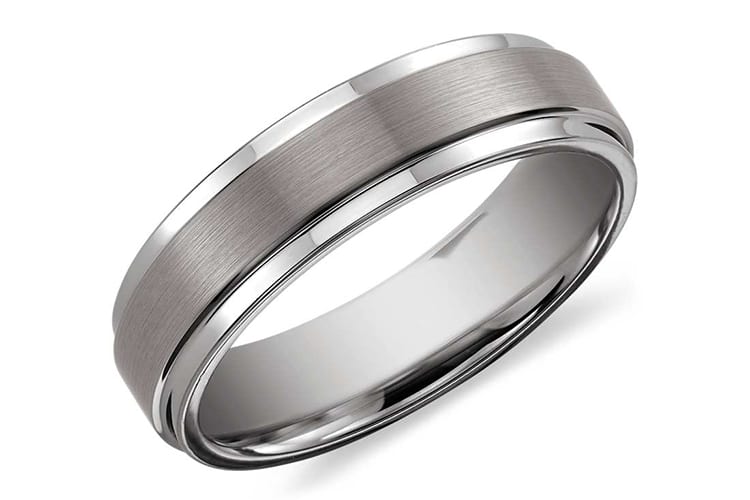
Wedding Band Details/Textures
Remember that famous line from “When Harry Met Sally” when Billy Crystal as Harry says to Meg Ryan’s Sally, (paraphrased): “There are two kinds of women: high maintenance and low maintenance… You’re the worst kind. You’re high maintenance but you think you’re low maintenance.” It’s a chick flick, I know — but the same can be said about rings. Remember this when selecting from your ring’s details and textures.
Mokume Gane
This is an ancient Japanese technique for mixing colors of metals that creates a wood grain pattern in the rings. Each is different and unique.
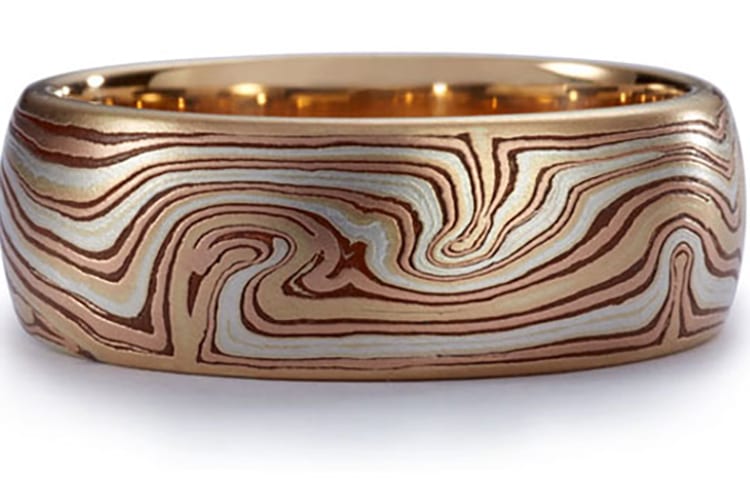
Granulation
The style dates back centuries and is primarily used in yellow gold. Small granules or bead-like structures are either fused or soldered to the surface of a ring, evoking an ancient and highly tactile feeling.
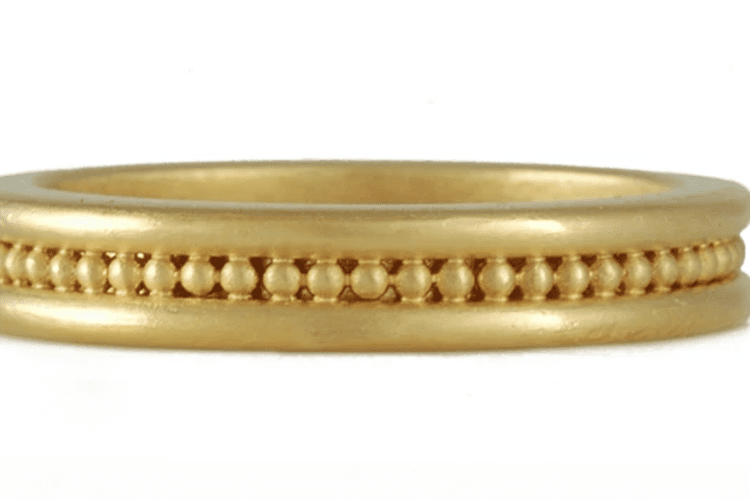
Millegrain
On the edge of a band, a jeweler makes tiny cuts into the metal that look like intricate tiny beads, giving a wedding band a vintage feel.
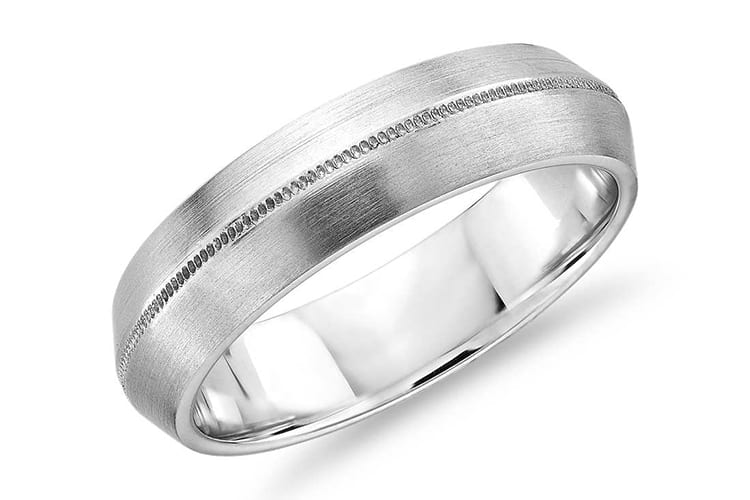
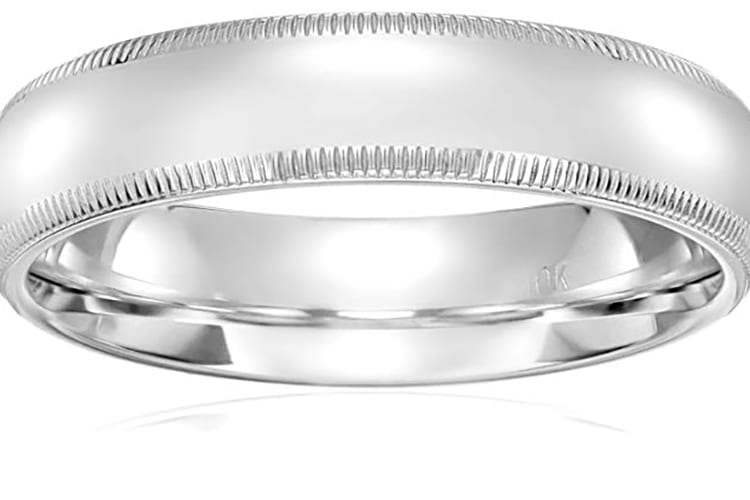
Rope Twist, Braided, and Basketweave
These are all woven textures that can signify continuity and refer to the infinity knot that is unbroken — when in a band that encircles the finger, it speaks to enduring love. These all can feature one, two, or three different colors of metal. Some are flat to the finger while others are raised and recessed.
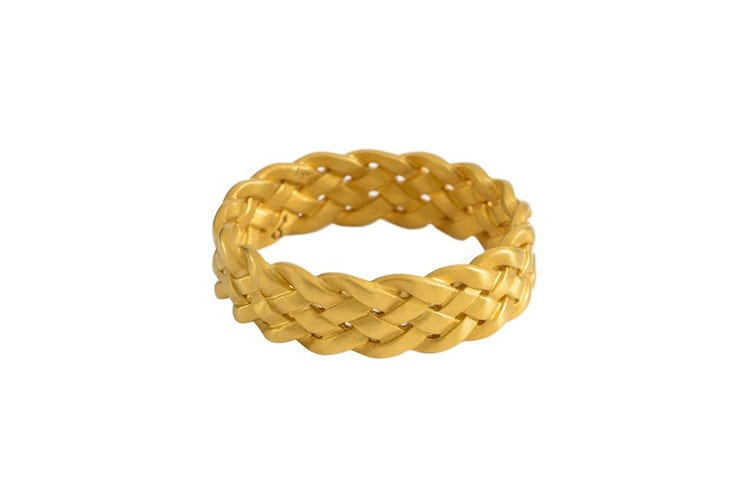
Recessed Line/Stripe
Simple and very popular, this style features a line circling the center of the ring, like the one below.
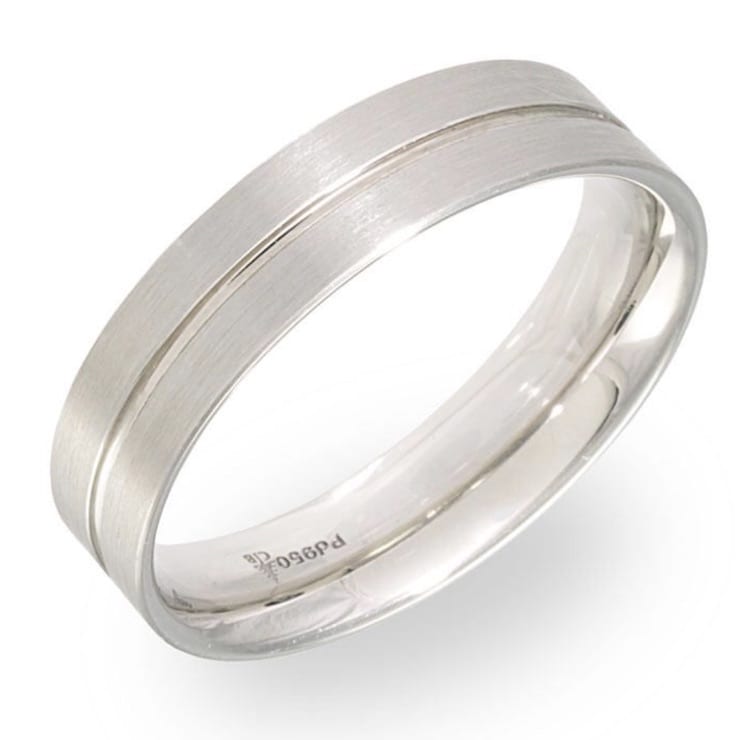
Linear or Scattered Patterns
You may see diamonds and other gemstones in linear or scattered patterns; this platinum satin ring has a row of stones.
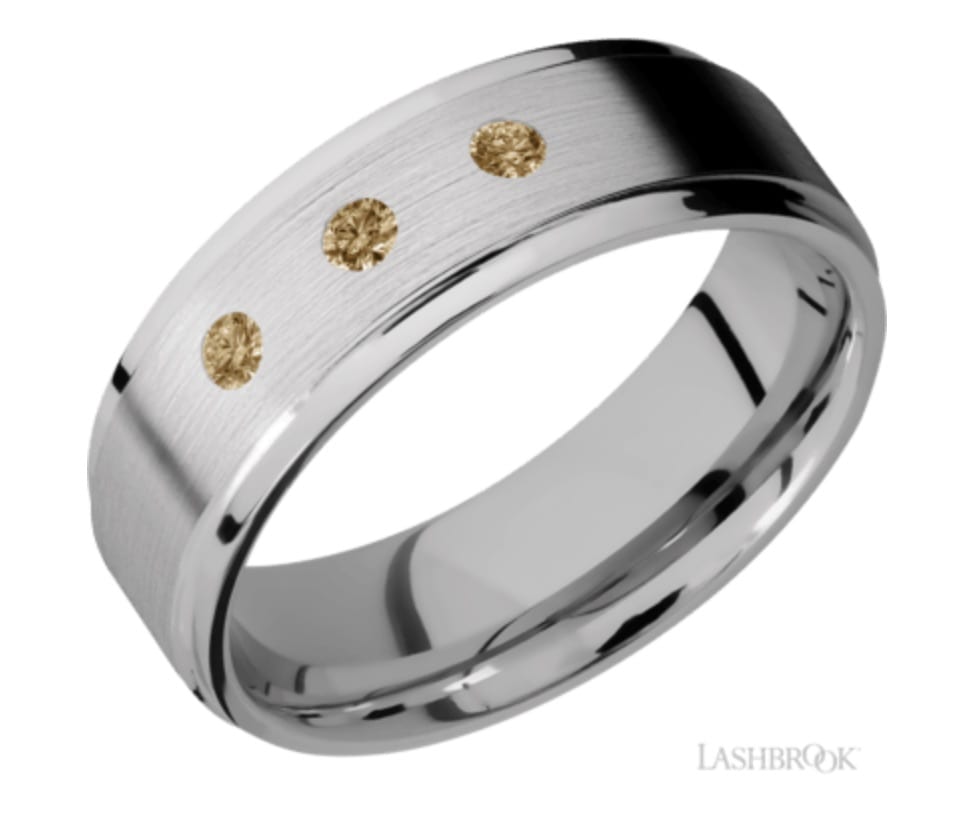
Wedding Band Finishes
Think of finishes as the final phase in designing the ring; do you want a bright gleaming ring or one that is more subdued? Here are the options to choose from…
Polished
Think: shiny and reflective with a mirror-like quality, and smooth to the touch. This is the most noticeable finish but to keep its sheen, it needs to be polished often.
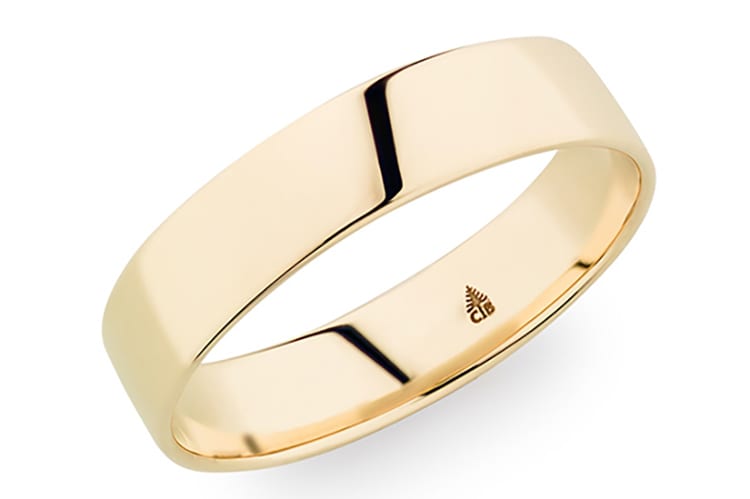
Satin
Smooth to the touch, less shiny, and it tends to diffuse rather than reflect the light, yet still has a subdued sheen.
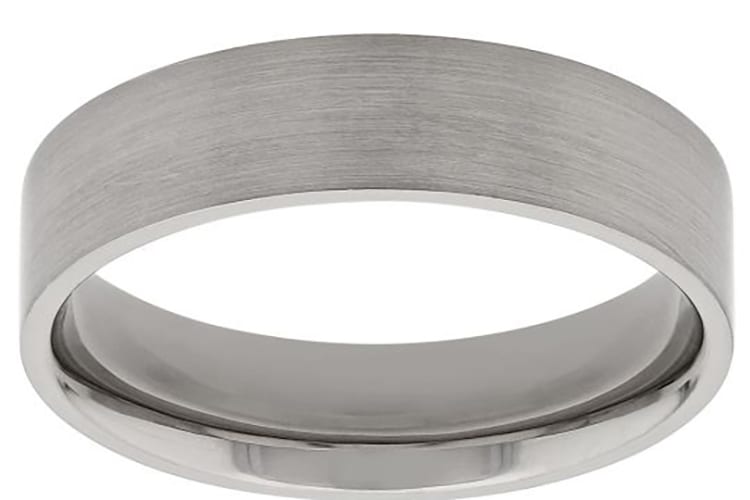
Matte
This diffuses the light and is similar to a satin finish — but a matte finish is so subtle it looks like it has almost a worn patina.
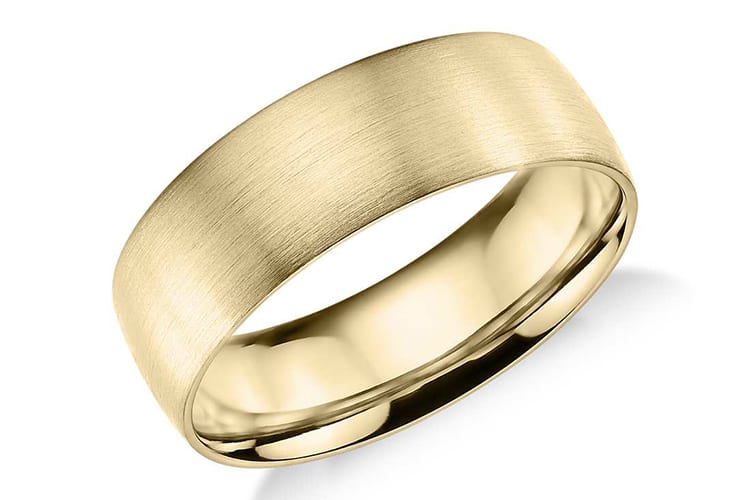
Brushed
Similar to satin and matte in its subtle diffusing of the light, this finish has a soft texture rather than being completely smooth.
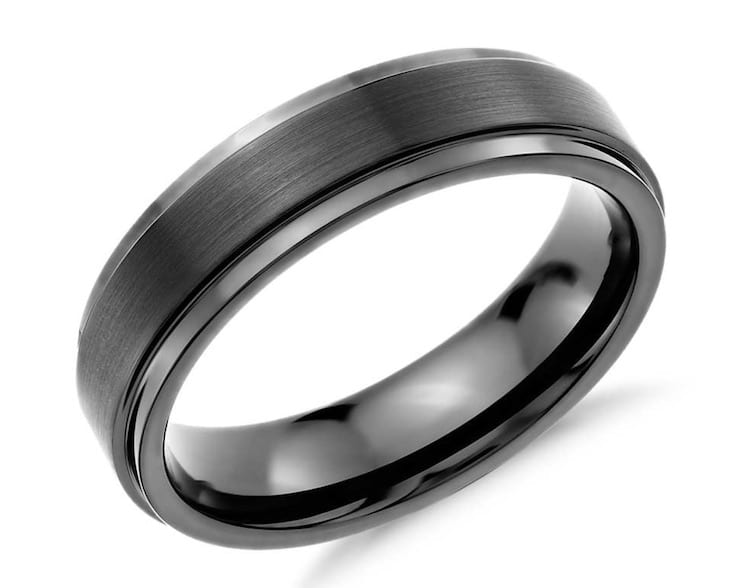
Sandblasted
More rough-hewn than brushed finishes, this kind of ring is actually blasted with fine grains of sand. It is the most difficult to care for when the finish starts to wear. You should bring it to the jeweler and have them redo the finish at the first sign of wear.
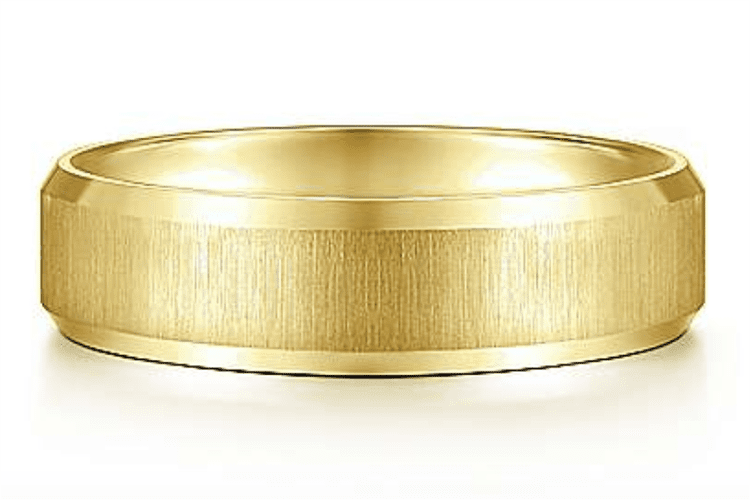
Hammered
It’s exactly what it sounds like and could be considered a texture as well as a finish. A jeweler uses different types of hammers to create a crinkled, dimpled effect in the metal. This is often done by hand or can be hammered into the model and then cast, offering a shiny/matte textural interest.
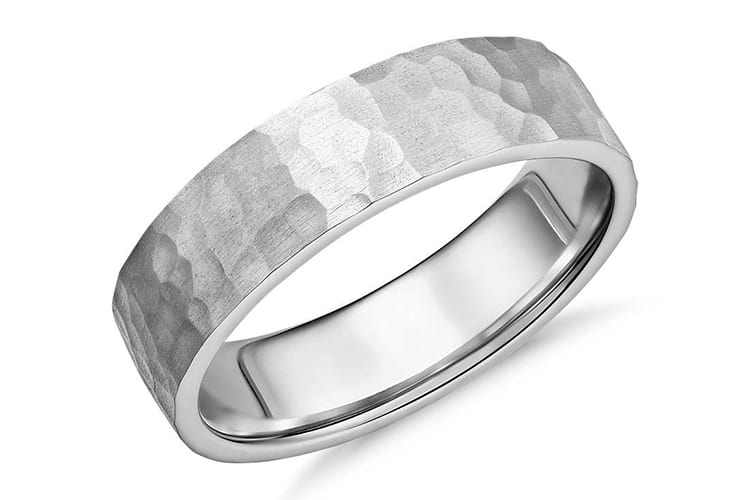
How to Maintain/Restore Matte, Satin and Brushed Textures
These types of rings will start to lose their finish and look like you bought a polished ring over time and with the wear of repeated washing of your hands. To quickly bring back the more subtle finishes, take a medium bristle toothbrush or ultra-fine steel wool and very gently go over the surface of the ring. If you see it starting to dull and go back to the original finish, you can keep working at it. To get the ultimate finish back, you will need to bring it into your jeweler.
Once you’ve decided on the metal, width, shape, texture, and finish, you can then decide on whether or not you want to customize the ring with a word, initials, dates, or a saying by hand or laser engraving on the inside of the band.
Hand engraving is a dying art in which a jeweler uses tools to engrave each letter in different styles of fonts that you choose. It offers the character of an old-world technique.
Laser engraving is less expensive and more precise in its execution and technology. Hand engraving can only be done on certain metals like platinum, gold and sterling silver, while laser engraving can be applied to a more diverse range of metals.
Below we’ve compiled lists of different brands, manufacturers, and websites of engagement rings that range from high-ticket to high-value (AKA great for the budget-minded).
Ring Brands and Stores to Know
High-End Designers
- George Sawyer
- Stephen Kretchmer
- Todd Reed
- Tacori
- Single Stone
- Baltera
- Simon G.
- Mark Schneider
- Christian Bauer
- David Yurman
Affordably Priced Manufacturers
Large Online Wedding Ring and Bridal Sites/Stores







